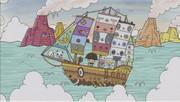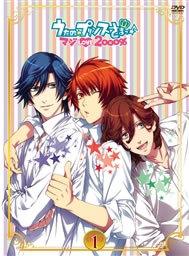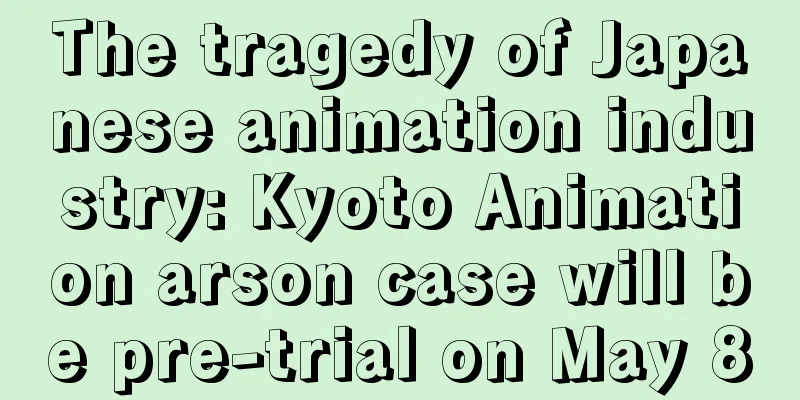The appeal and reviews of "Bunpuku Chagama": A must-see masterpiece for anime fans

Bunbuku tea kettleoverviewBunbuku Chagama is a Japanese short animated film that was released on January 1, 1932. The film is based on a piece of traditional literature and was produced by Banno Bunzaburou Shoten and Oishi Ikuo. Although it is short, only 18 minutes long and one episode, it is a work with deep content. Published and original mediaThis work is classified as "other" public media, and its original work is taken from "traditional literature." Traditional literature is a story that has been passed down through oral tradition or folklore, and Bunpuku Chagama is one such example. Works with this background express long-cherished stories in the new medium of animation, and can be said to have high cultural value. Production background and technologyBunpuku Chagama was made to synchronize with the A and B sides of Nitto Records 3918. Specifically, the record would start to play when the word "START" appeared on the screen, and when one side finished, titles showing the progress of the story would appear on the film. During this time, the record would be turned over, and when the word "START" appeared again, side B would be played. This kind of synchronization technology was very advanced for its time, and provided a new experience for the audience. Details of this technology can be found on pages 207-208 of the History of Japanese Animation Films. storyThe story of Bunpuku Chagama is based on a legendary episode in which a raccoon dog transforms into a tea kettle and helps people. One day, the raccoon dog is saved by a traveling monk, and in return transforms into a tea kettle to support the monk's livelihood. This story depicts the spirit of giving back and helping each other, and is sure to move viewers. The humorous character of the raccoon dog is also one of its charms, making it enjoyable for both children and adults. characterThe main characters of Bunpuku Chagama are a raccoon dog and a traveling monk. The raccoon dog has the ability to transform into a tea kettle and is a humorous and relatable character. Meanwhile, the traveling monk is the central character of the story, helping the raccoon dog and receiving a favor in return. Through these two characters, themes of mutual help and gratitude are depicted. Evaluation and impactBunpuku Chagama has been highly acclaimed since its release in 1932. In particular, the new viewing experience created by the use of synchronization technology has amazed and moved many viewers. It has also been highly praised for its depiction of traditional literature through animation, and is recognized as a work of cultural value. This work occupies an important place in the history of Japanese animation films, and has influenced works of later generations. Reasons for recommendationAlthough short, Bunpuku Chagama is a work with profound content, providing viewers with moving and humorous experiences. Furthermore, the new viewing experience using synchronization technology was extremely advanced for its time, and its value can still be felt today. Another attractive feature is that it depicts traditional literature in the form of animation, and we recommend it as a work of cultural value. In particular, the story, which depicts mutual help and gratitude, can be enjoyed by people of all ages, making it perfect for viewing with the family. Related works and recommendation listOther works related to Bunpuku Chagama include animated films based on traditional literature. For example, "Momotaro" and "Urashima Taro" are animated versions of long-loved stories, and share themes and values with Bunpuku Chagama. Other examples of works that use synchronization technology include "Snow White" and "Pinocchio." These works provide a new viewing experience by synchronizing music and video, and, like Bunpuku Chagama, are highly regarded for using advanced technology. Further information and supplementary informationBunpuku Chagama was produced by Banno Bunzaburou Shoten and Oishi Ikuo. Banno Bunzaburou Shoten was an animation production company at the time, and produced many works. Oishi Ikuo was active as a director and producer, and made a major contribution to the production of Bunpuku Chagama. In addition, the synchronization technology with Nitto Records 3918 A and B sides was the culmination of the efforts of the engineers at the time, and provided viewers with a new experience. For more information about this technology, please see pages 207-208 of the History of Japanese Animation Films, which I highly recommend for anyone interested. ConclusionBunpuku Chagama is a Japanese short animated film released in 1932, based on a piece of traditional literature. Its new viewing experience using synchronization technology and its story of mutual help and gratitude will leave viewers feeling touched and humorous. It is also regarded as a work of cultural value, having influenced works of later generations. Please watch this film and feel its charm. |
<<: Bunpuku Chagama Review: A fascinating story and deep characters
>>: The Evolution of the Automobile: Evaluating the Latest Technology and Design
Recommend
The latest trailer and the latest ED theme song of the new fantasy emotional series "PET" are also included
The TV animation of "PET", the famous m...
The appeal and reviews of "Sorairo Utility": An anime experience not to be missed
A comprehensive review and recommendation of Sky ...
Dexter: Resurrection first trailer reveals young version of Dexter
Showtime's hit series Dexter is back! The pre...
Bells toll in the valley: Reevaluating the moving songs of everyone
"The Bells Ring in the Valley" - A Show...
Grandma's Memories: A thorough review of the moving movie!
"Grandma's Memories" - A heartwarmi...
The appeal and reviews of "Soreike! Anpanman: Robori and the Warm Presents": A new adventure in the Anpanman series
"Let's Go! Anpanman: Robory and the Warm...
The appeal and evaluation of "Maple Colors": A must-read review for anime fans
The appeal and reviews of "Maple Colors"...
Hojo Tsukasa revealed that "Cat's Eyes" will be made into a live-action drama and will be produced in France
According to Japanese media reports on April 1, H...
Next War EHRGEIZ - A thorough review of the intensity of the battle scenes and the depth of the story
"Next War EHRGEIZ": A story of warriors...
A new chapter for the plastic armored man! The latest trailer for "Knight Ryu Sentai Ryusouger" is released
The 43rd work in the Super Sentai series, "K...
Natalie Portman worked out for 10 months for Thor 4, sometimes starting work at 4:30 a.m.
Natalie Portman's muscles as the female Thor ...
Hollywood to remake Train to Busan, Warner's New Line Cinema takes over
According to foreign media Deadline, Hollywood wi...
Read the whole volume for free! Shueisha Obata Takeshi's original illustrations "Bakuman. " benefits are available
Shueisha announced today that to commemorate the ...
Documentary "Console Wars" IGN 9 points: The love and hatred between Sega and Nintendo in the 1990s
The CBS documentary of the same name, adapted fro...
The new trailer of "Bone Knight's Adventure in Another World" confirms that it will be broadcast in April
The official TV animation adapted from the popula...









